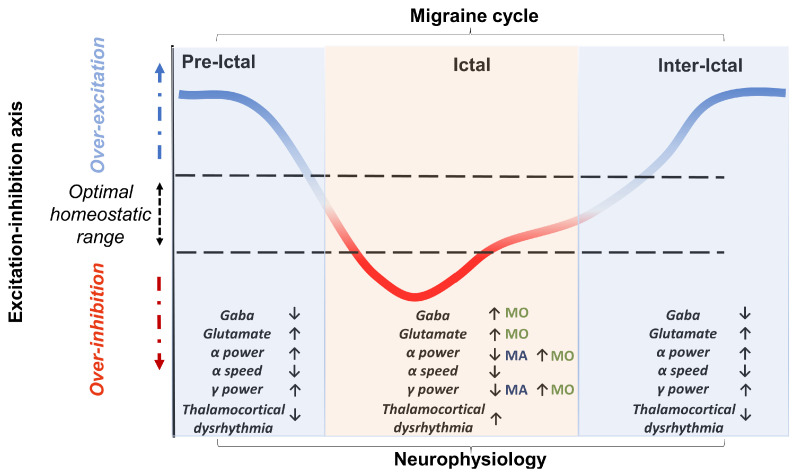Figure 1.
The proposed perspective view considers the imbalance between excitation–inhibition characterising migraine as a dynamic attempt to reach an optimal homeostatic balance. This attempt to stay in the optimal excitability range is characterised by specific and different electroencephalographic and neutrotransmitter markers across the migraine cycle. The orientation of the arrows indicates the progression of the marker throughout the migraine cycle. In particular, in the migraine phases characterised by overexcitation (preictal and interictal), a trend consisting of a decrease, compared to the ictal phases in both GABA concentration and dysrhythmia between the thalamus and cortex, can be observed. In contrast, alpha and gamma power increase in these phases. In the ictal phases, a heightened dysrhythmia in the thalamocortical activity can be detected. Moreover, in this phase, the trajectory of the neurophysiological marker varies according to the type of migraine (MO vs MA). In MO, there is an increase in GABA concentration, but alpha and gamma power remains higher. In contrast, in MA, there is a desynchronisation in both alpha and gamma frequency bands. Two other parameters noted to be abnormal in migraineurs are glutamate concentrations (increased) and alpha speed (reduced). However, these two markers do not appear to be significantly modulated by the migraine cycle and thus they could be considered as phase-non-specific markers of migraine. It is important to emphasise that the results in the literature are mixed and patchy. Therefore, future follow-up studies will be needed to empirically assess the precise correspondence between migraine phase and directionality of the effect on physiological parameters.

